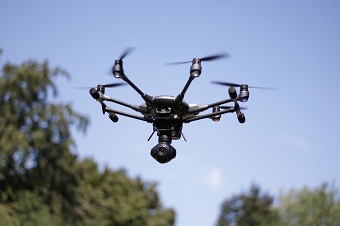The Ministry of Civil Aviation (MoCA) has released the updated – The Drone Rules, 2021 for public consultation. With this the UAS Rules 2021 released in March stand repealed.
Built on a premise of trust, self-certification, and non-intrusive monitoring, The Drone Rules, 2021 will replace the UAS Rules 2021 (released on 12 March 2021). The last date for receipt of public comments is 5 August 2021.
Commenting on this development Mr. Rajan Luthra, Chair of FICCI’s Committee on Drones said, “It is a truly landmark day for the drone sector in India! The significant change between the two sets of rules is phenomenal and bodes well for everyone associated with this transformational sector.”
Mr. Luthra congratulated the Government officials for listening to, and wholeheartedly supporting the cause of drone startups, the academia, the manufacturers, and the End Users of drones in India.
“That these new rules were approved despite the pressure caused by the recent drone based attack at an Air Force base highlights the visionary leadership of Shri Narendra Modi ji and everyone concerned at the Ministry of Civil Aviation and Government of India,” said Mr Luthra.
He further said that it was highly satisfying that the efforts put in by FICCI Committee on Drones (along with many others) to bring out the key pain points and provide specific recommendations were taken cognizance of. We shall work with all stakeholders to submit inputs and recommendations before the 5th August deadline. “Now, India is well on it’s way to become The Drone Hub of the World,” he exclaimed.
It may not be out of place to mention that Mr. Amber Dubey, Joint Secretary at the Ministry of Civil Aviation has played a key role in the development of the drone regulatory policy.
25 takeaways from the Draft Drone Rules, 2021 are:
1. Built on a premise of trust, self-certification and non-intrusive monitoring.
2. Drone Rules, 2021 will replace the UAS Rules, 2021 (released on 12th March, 2021).
3. Approvals abolished: unique authorisation number, unique prototype identification number, certificate of conformance, certificate of maintenance, import clearance, acceptance of existing drones, operator permit, authorisation of R&D organisation, student remote pilot licence, remote pilot instructor authorisation, drone port authorisation etc.
4. Number of forms reduced from 25 to 6.
5. Fee reduced to nominal levels. No linkage with the size of the drone.
6. Safety features like ‘No permission – no takeoff’ (NPNT), real-time tracking beacon, geo-fencing etc. to be notified in future. A six-month lead time will be provided for compliance.
7. Digital sky platform shall be developed as a business friendly single-window online system.
8. There will be minimal human interface on the digital sky platform and most permissions will be self-generated.
9. Interactive airspace maps with green, yellow and red zones will be displayed on the digital sky platform.
10. Yellow zone reduced from 45 km to 12 km from the airport perimeter
11. No flight permission required upto 400 feet in green zones and upto 200 feet in the area between 8 and 12 km from the airport perimeter
12. No pilot licence required for micro drones (for non-commercial use), nano drone and for R&D organisations
13. No restriction on drone operations by foreign-owned companies registered in India.
14. Import of drones and drone components to be regulated by DGFT.
15. No security clearance required before any registration or licence issuance
16. No requirement of certificate of airworthiness, unique identification number, prior permission and remote pilot licence for R&D entities.
17. Coverage of drones under Drone Rules, 2021 increased from 300 kg to 500 kg. This will cover drone taxis also.
18. All drone training and testing to be carried out by an authorised drone school. DGCA shall prescribe training requirements, oversee drone schools and provide pilot licences online.
19. Issuance of Certificate of Airworthiness delegated to Quality Council of India and certification entities authorised by it.
20. Manufacturer may generate their drone’s unique identification number on the digital sky platform through the self-certification route
21. Easier process prescribed for transfer and de-registration of drones.
22. Standard operating procedures (SOP) and training procedure manuals (TPM) will be prescribed by DGCA on the digital sky platform for self-monitoring by users. No approvals required unless there is a significant departure from the prescribed procedures.
23. Maximum penalty under Drone Rules, 2021 reduced to INR 1 lakh. This shall, however, not apply to penalties in respect of violation of other laws.
24. Drone corridors will be developed for cargo deliveries.
25. Drone promotion council to be set up to facilitate a business-friendly regulatory regime








